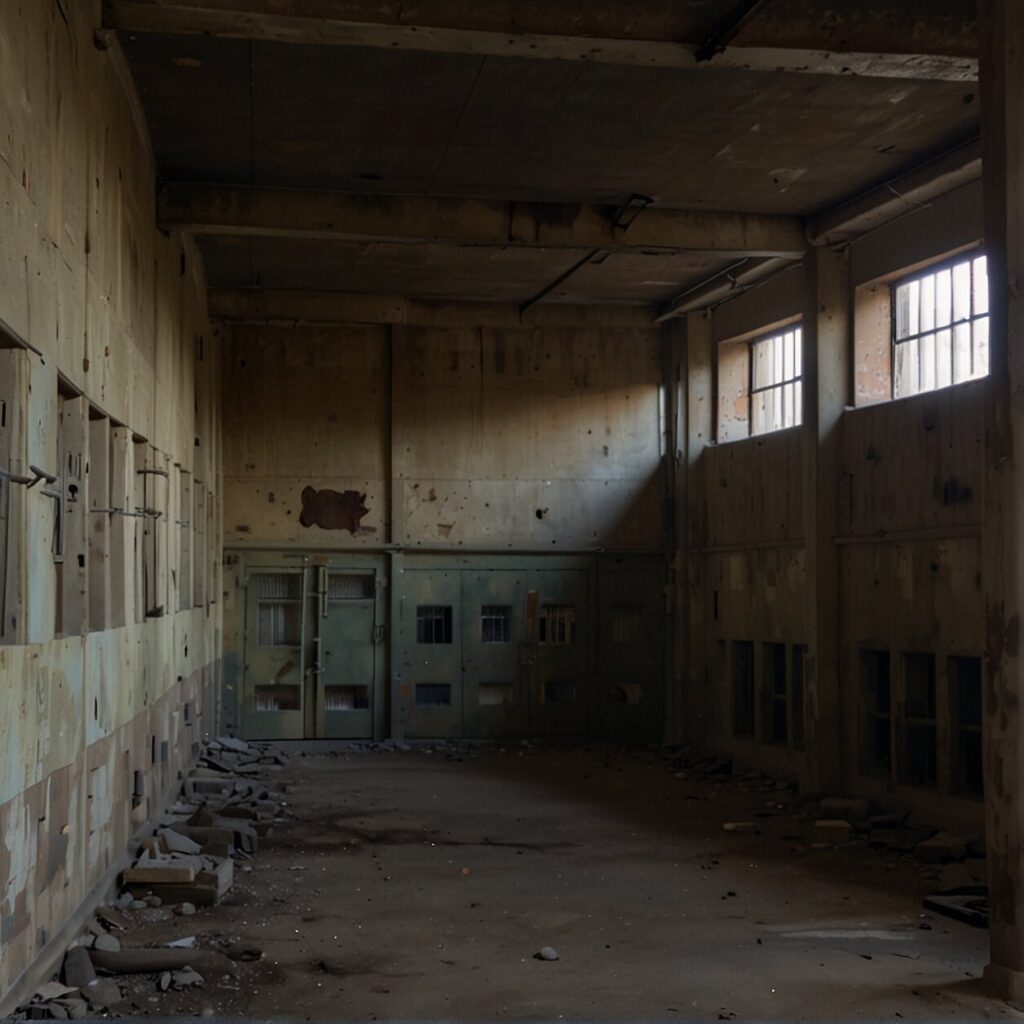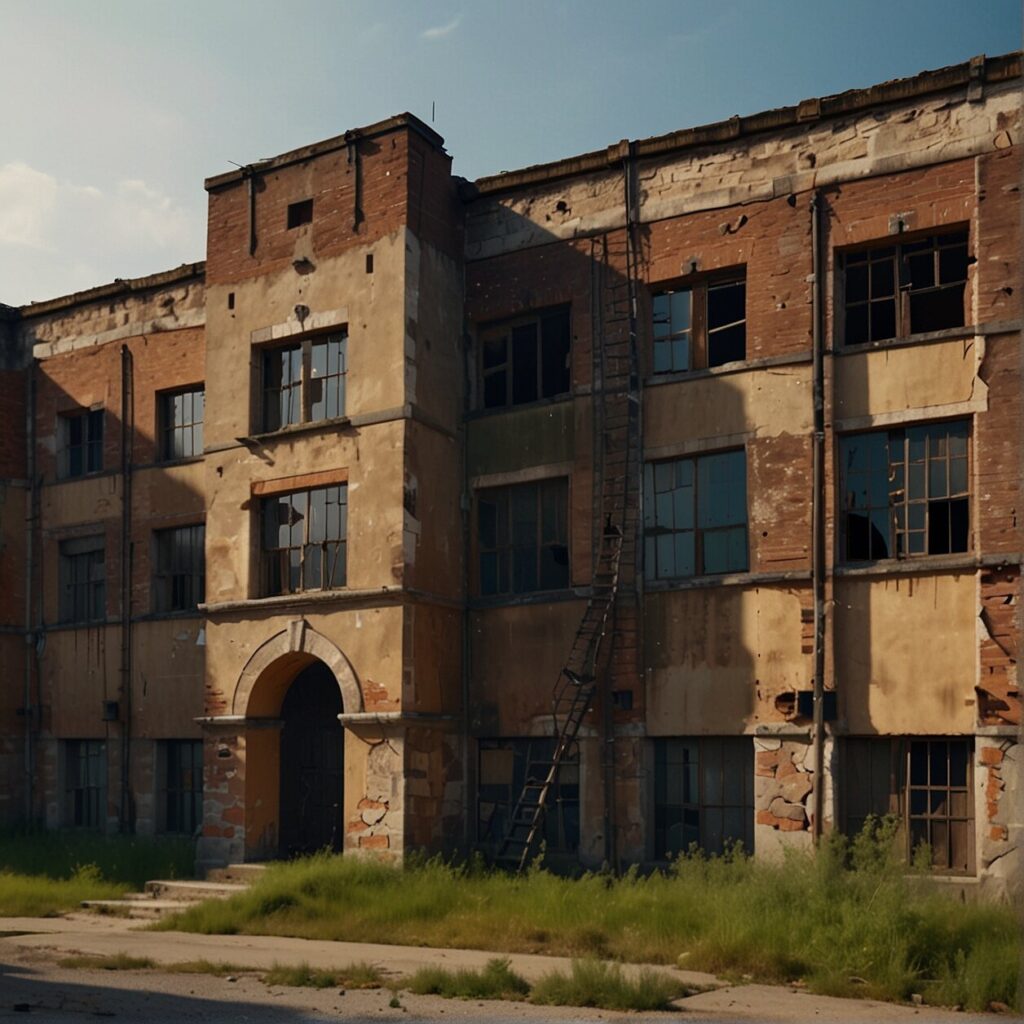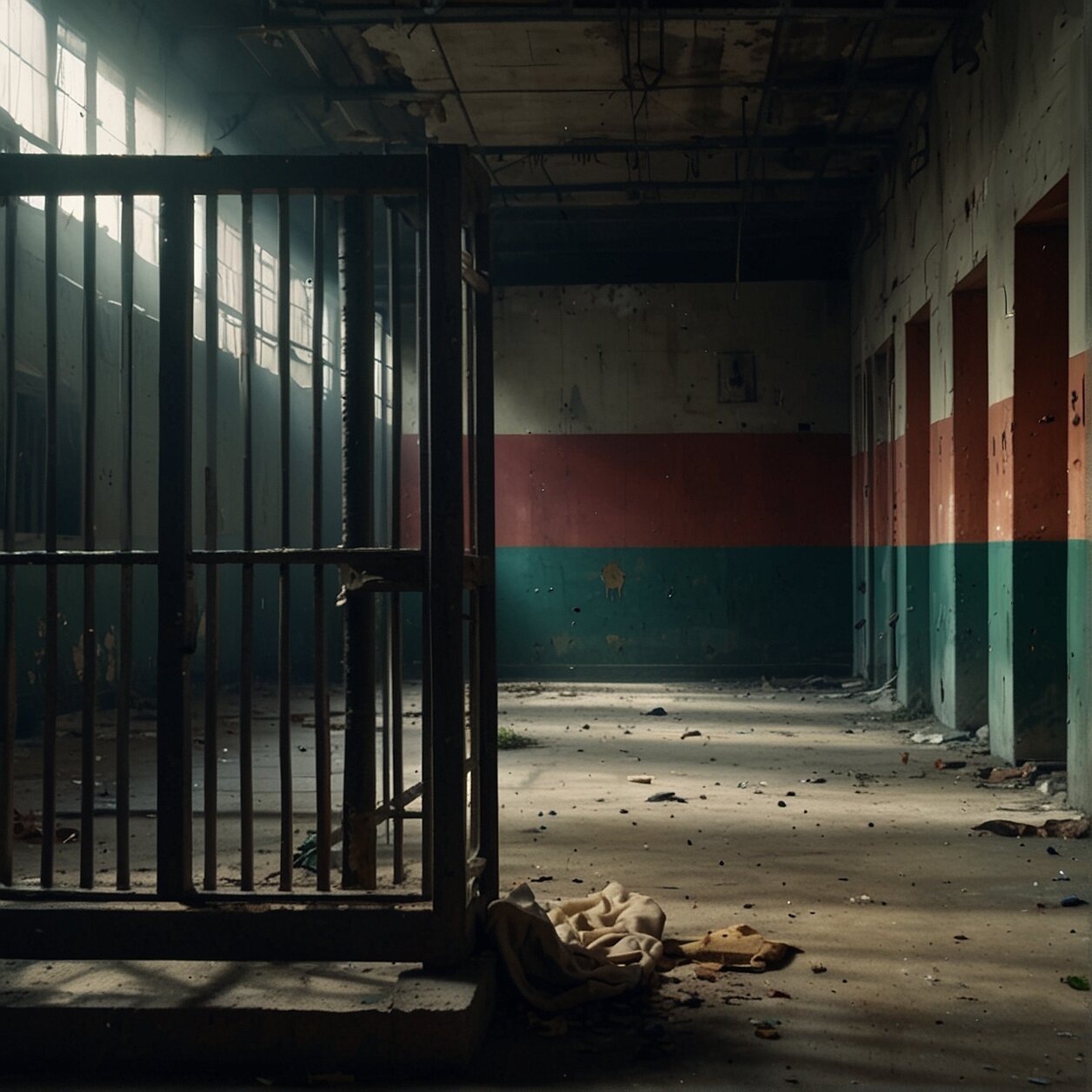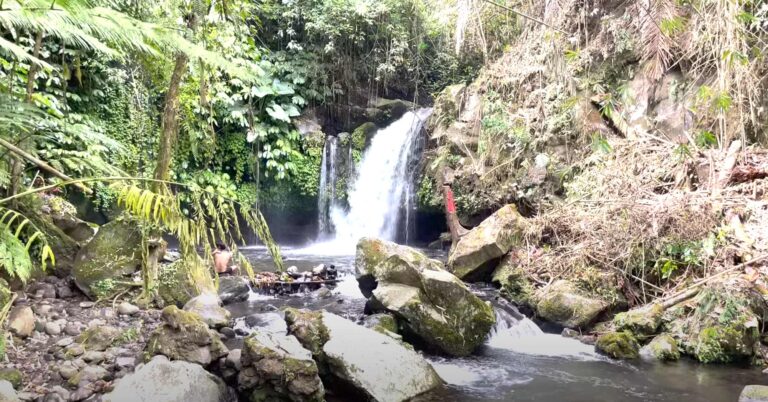Journey through the Abandoned Prisons of the East Coast
Welcome to your one-of-a-kind journey through time and chilling storytelling, as we tour prisons that once housed notorious criminals but now stand as hauntingly beautiful reminders of our past. Yes, you heard right, abandoned prisons. On the U.S. East Coast, such locations offer not only a glimpse of some forgotten architectural gems but also whisper tales of their inmates’ lives, the era’s societal fabric, and sometimes, their ghost stories. So, brace yourself for a unique travel experience that is guaranteed to give you chills, provoke your thoughts, and envelop you with an undeniable air of nostalgia.
From the eerie silence of cells in the Eastern State Penitentiary to the grim tales of the West Virginia Penitentiary, here’s your exclusive guide to the most mesmerizing abandoned prisons on the East Coast. Be prepared for a journey through winding corridors of solitude, standing watchtowers now devoid of their vigilant eyes, and yards that have grown silent over the years.
Through this guide, you’ll not only glimpse the architectural marvels of these colossal structures but also dive deep into their histories, understand their significant roles within the society they belonged to, explore their gallows, and if you dare, uncover their well-known ghost stories. Are you ready for this unique adventure?
Come, journey with us into the echoing halls of these abandoned monuments of justice – a journey bound to leave you with a newfound perspective and unforgettable memories.
Mapping the Ghostly Trails: Abandoned Prisons on the East Coast
So you’re ready to map out your ghostly trail and explore these remnants of foregone eras. Let’s delve in, shall we?
First up, located in the heart of West Virginia, is the Moundsville Penitentiary. Opened in 1876 and active until 1995, it’s long been abandoned, awaiting intrepid explorers. Known for its gothic architecture and sordid past, Moundsville Penitentiary offers a compelling glimpse into yesteryears.
Next on our journey is the Eastern State Penitentiary in Pennsylvania. Considered one of the most haunted places in America, this prison has been decommissioned since 1971 but continues to evoke a chilling presence with its imposing stone walls and echoing corridors.
Our haunting guide then takes us to Lorton Reformatory, nestled in the outskirts of Virginia. Its dilapidated structures, creeping ivy, and the haunting quietude give an eerie aura to this once bustling institution.
Finally, no trail would be complete without a visit to the imposing Thomaston State Prison in Maine. The fortress-like structure stands in stark contrast against the serene landscape, the juxtaposition jarring, and yet oddly beautiful.
Exploring these deserted behemoths isn’t merely a spooky expedition; it’s a trip through the chapters of American history – tales of reform, pain, resilience, and societal evolution echoing through abandoned cell blocks and across dusty yards.

Ghost Stories and Legends: The Haunted Prisons of the United States
Sure, as per your instructions, I’ll continue the section and return it in form of valid HTML. Not starting with a new title. Here is the continuation of the section:
You’ve heard of haunted houses, spooky cemeteries, and eerie woods, but what about haunted prisons? Yes, you heard it right. Abandoned prisons on the East Coast are truly a site for ghost explorers and paranormal enthusiasts. These hauntingly beautiful buildings, although now quiet and serene, once held stories of gore, violence, and despair that have left a lasting imprint on these ancient walls.
Take, for instance, the Eastern State Penitentiary in Philadelphia, Pennsylvania. Operational from 1829 through 1971, this prison was home to many notorious criminals, including Al Capone and “Slick Willie” Sutton. Today, it stands as a ghostly shadow of its once fearsome reputation with paranormal investigators claiming to have heard unexplained noises and seen shadowy figures lurking in its abandoned corridors.
Further south, the Old Charleston Jail in South Carolina, operational from 1802 until 1939, was infamous for housing some of the most hardened criminals of its time. The eerie stories from this jail often revolve around Lavinia Fisher, considered as America’s first female serial killer. Ghost tours frequently report sightings of a woman in a wedding dress (believed to be Fisher), wandering the premises.
These stories, while intriguing, barely scratch the surface of the rich history and paranormal significance of these formidable structures. As you plan your ghostly adventure on the East Coast, remember, these prisons carry age-old stories that echo within their walls. Dare to explore the abandoned prisons, not just for their architectural grandeur, but for the stories that they whisper into willing ears. Just remember, these might be abandoned, but as numerous visitors swear, you might not be alone!
Breaking Down the Walls: A Deeper Look into Prison Life
Let’s venture into the somber past. As your guide, it’s my duty to make sure your journey through these hollow halls is as informative and factual as possible. Brace yourself, because you’re about to gain firsthand insights into the tensions, fears, and mundane realities that once dominated these abandoned structures.
Imagine, if you can, thick stone walls surrounding you, endless corridors echoing with the clang of metal, and the profound sense of loneliness that seeped into these dank cells. The prisons of the East Coast, now eerily silent, once brimmed with life, albeit life characterized by regulation, restriction and punishment.
These penal facilities were designed not just as places of confinement but of reformation. Based upon theories of punishment and reform that evolved over centuries, the architecture, layout, and routines were all intended to shape behavior. They manifested the philosophy that through solitude, silence, and hard work, miscreants could rehabilitate.
But what did solitary confinement really mean for inmates? What were their day-to-day experiences? How did they interact – or not interact – with each other, guards, and the wider prison community? As we wander through these deserted corridors and empty cells, each echoing with untold tales, you’ll gain a unique perspective into these queries.
Remember though, whilst these prisons may be abandoned, they are far from forgotten. Their histories tell an intriguing story of societal attitudes towards crime, punishment and rehabilitation, with lessons we can still learn from today. As we navigate these dilapidated structures, soak in their profound silence and make a mental note – these are more than just buildings, they’re historical touchstones to our past.

Preserving the Past: The Importance of Protecting Abandoned Prisons
Why, you may ask, should we concern ourselves with the preservation of seemingly desolate and forgotten structures such as abandoned prisons? It’s quite simple. Let’s delve into it.
Each of these hauntingly beautiful prisons are silent witnesses to a plethora of human experiences. Time has adorned their once robust walls with the unmistakable patina of age, turning them into prominent landmarks and monuments of past societal decorum. By protecting and preserving these historic buildings, we’re essentially embracing a tangible form of collective memory and history.
Learning from the Past
Every peel of paint, every cracked tile, and each corroded iron bar has a story to tell. Embedded within their dilapidated structures, they proffer valuable insights about societal attitudes towards crime and punishment in different eras. By studying them, we learn not only about our past but also gain the ability to approach the future with better-informed decisions.
Aesthetic Appeal
From an artistic and architectural viewpoint, many of these abandoned prisons are genuinely remarkable. The architecture of these buildings, often grand and imposing, is a testament to the styles and trends of their times. In preserving them, we also conserve this unique architectural heritage for future generations to appreciate.
The Potential for Revitalisation
Many of these magnificent buildings, with the right kind of investment and vision, can be transformed into something meaningful and profitable. Across the world, we have examples of abandoned prisons turned into unique tourist attractions, hotels, museums and even creative hubs, proving that they can move beyond their sombre past towards a brighter, more productive future.
So, there you have it. Each one of these desolate, ghostly buildings represents an opportunity – a chance to celebrate our past, learn from it, and build a more informed future.
Time Machines: How Old Prisons Reflect Societal Changes
A journey into these abandoned prisons is not merely an exploration of forgotten architecture – it’s a step back in time. As you navigate these hauntingly beautiful spaces, you’re doing more than basking in their eerie beauty. You’re witnessing the legacy of societal changes firsthand.
What makes these prisons a telling reflection of societal change? Well, it’s all embedded in their design, years of existence, and the evolution of corrective measures. They stand as vivid testament to changing views on crime, punishment, and redemption. Let’s delve into this intriguing aspect.
Design Philosophy: No two prisons are the same, just as no two time periods or societal norms are. Each prison was built according to the dominant beliefs of the era. Early prisons, for instance, focused on solitary confinement, testament to a time when isolation was believed to induce repentance. As societal norms shifted, so did prison designs, with more emphasis on education and skill-building for inmates.
Periods of Existence: These abandoned prisons span a wide range of time periods – from the late 1700s to the 20th century. A walk through these old prisons offers valuable insights into the prosperous times, wars, social conflicts, and economic depressions that they’ve weathered. It’s almost like flipping through a history book with 3D illustrations.
Correctional trends: Evolution in penal systems and changing correctional ideology are also reflected in these prisons. Penal colonies aimed at punishing offenders slowly shifted to rehabilitation centers, aimed at reforming inmates, reflecting the society’s evolving understanding of crime and punishment.
An abandoned prison is, therefore, far more than an grim edifice made of stone and iron. It’s a mirror into the soul of society at different points in time. As you journey through these eerie landscapes, remember that you’re essentially moving through the corridors of history. It’s an adventure that’s haunting, educational, and utterly unique.
FAQ’S
As we delve into the chilling yet intriguing world of abandoned prisons, it’s quite understandable if you have questions arising in your mind. This FAQ section has been carefully curated to address some of the frequently asked questions. Here, we endeavor to answer all your queries, from the logistics of visiting these historical ruins to critical safety measures, as well as the potential for photography and the unique architectural highlights. So, let’s get down to unearthing some facts!
How can I visit these abandoned prisons on the East Coast?
Embarking on a journey to visit these abandoned prisons can be quite a thrilling experience. However, it is important that you plan your trip effectively.
Begin your quest with a little bit of research. Check online resources for detailed information about the history and location of these prisons. Some prisons might be part of specialized tours while others are left entirely to the elements. Guidebooks and local visitor centers can also provide useful information.
Note that not all abandoned prisons are open for public visit. Some may still be under the jurisdiction of the local government or private entities, so ensure that you’re legally allowed to visit. Always respect private property and adhere to local laws and regulations.
When planning your visit, remember to gear up appropriately. Wear sturdy shoes, long pants, and gloves to avoid injuries, insect bites, or harmful plant exposures.
Last, but not least, remember to bring your camera. These haunting locales offer numerous opportunities for photography, capturing their stark beauty and deep history.
Which East Coast state has the most abandoned prisons?
If you’re keen to explore, then you may want to set your sights on the state of New York. Surprisingly, New York is home to an impressive number of abandoned prisons. Perhaps the most famous among them is the ominous Clinton Correctional Facility in Dannemora, sometimes referred to as “New York’s Siberia” due to its remote location and harsh winters.
In addition to Clinton, Lyons Correctional Facility offers a haunting snapshot of prison life in years past. From the peeling paint on the walls to the rusty bars of the cells, every inch of this place tells a story. And let’s not forget about Eastern State Penitentiary in Philadelphia, which is now a museum offering public tours of the eerily preserved ruins.
Each of these abandoned treasures stand as testament to a former era, complete with its own unique history and tales of inmates who once called these places home. But bear in mind, while the buildings may be abandoned, exploring these sites is not without its risks. Observe all safety measures and treat these historical sites with respect and caution. This way, we can assure these places will stay undisturbed, forever preserving the chilling tales of the past.
What safety measures should I take when visiting these abandoned prisons?
Visiting abandoned prisons can be a thrilling, yet risky venture. Safety must always be your primary concern. Firstly, remember that these establishments are long-abandoned, and thus the structures can be unstable. It is crucial to wear proper safety equipment such as sturdy boots, a hard hat, and gloves. Keeping a first-aid kit on hand can be very beneficial in case of any unexpected mishaps.
Bear in mind that abandoned buildings, like these prisons, may still contain hazardous materials such as asbestos and lead-based paints. Do your research and ensure you’re informed about possible health risks before embarking on your journey. Wearing a protective mask can help safeguard you against potential airborne dangers.
Always let someone know where you’re going and how long you expect to be gone. If possible, try not to explore these areas alone. Having a companion provides an additional measure of safety, especially in locations where cell service might be unreliable.
Finally, respect the premises. These locations are steeped in history and should be treated with the appropriate reverence. Follow any posted rules or guidelines, as these are often in place for your safety, as well as the preservation of the site.
Embracing these precautions can help turn your exploration of abandoned prisons into a safe, memorable, and thought-provoking experience.
What are some of the architectural features of these abandoned prisons?
You may be surprised to discover the rich architectural diversity preserved within these old, silent structures. Many abandoned prisons on the East Coast share similar historical design elements common to the era in which they were built. Let’s explore some key features that you’re likely to encounter on your desire to learn more.
The Castle-like Facades
As you wander the perimeter of these magnificent buildings, you can’t miss their castle-like facades. Modeled after the formidable fortresses of Europe, these structures were designed to project power. With their ominous, towering stone walls and imposing gatehouses, they scream ambition and security. Eastern State Penitentiary in Philadelphia is a prime example of this architectural style.
The ‘Panopticon’ Design
Many abandoned prisons followed the ‘panopticon’ model popularized in the 19th century by British philosopher Jeremy Bentham. This design, featured in places like the West Virginia State Penitentiary, centers around a guard tower, from which wardens could surveil all the inmates simultaneously. With this model, a constant sense of being watched was instilled in the prisoners, thus promoting discipline without the need for physical force.
The Cell Blocks
Diving into the heart of these structures, your attention is drawn to the towering, multi-tiered cell blocks. Long, narrow and eerily quiet, these multi-story buildings that once housed hundreds of inmates are now haunting reminders of the sites’ past lives. The deteriorating condition of these cells, complete with barred windows and old bunk beds, adds a raw touch to your visit.
The Solitary Confinement Facilities
Last, but certainly not least, is the solitary confinement area, giving one a chilling sense of the harsh realities of penance. These small, dark cells designed for isolation housed inmates deemed unruly or dangerous. A visit to such sections, like the ‘dungeon’ beneath New York’s Fort Delaware, will undoubtedly leave an indelibly chilling mark on your psyche.
Each architectural element in these prisons paints a vivid picture of correctional history, offering you a unique opportunity to step back in time and gain insight into a different era of criminal justice. These abandoned prisons are much more than decaying buildings; they are silent markers of human history.
Can I do a photography shoot at these abandoned prisons?
Absolutely, you can! The captivating aesthetics of these abandoned prisons on the East Coast can make for an immersive photography shoot. However, the rules and permissions may vary from site to site. It’s crucial that you respect the history and significance of these locations, despite their desolate state. Reach out to local authorities or property owners to secure necessary permissions. It’s important to understand that while these sites are visually stunning, they should be treated with the respect they deserve for their historical significance.
Do bear in mind, the structures of these prisons can be unsafe due to degradation over time, so it’s vitally important not to overlook safety during your exploration. When preparing for your shoot, make sure to wear sturdy footwear, and don’t venture into any area that looks precarious without the guide of a professional.
These hauntingly beautiful abandoned prisons provide a unique backdrop for your photography, capturing their eerie allure and historical importance. The contrasting textures of these time-worn spaces can lend your pictures a touch of spectral elegance that’s hard to replicate. Don’t miss the chance to use the natural light filtering through the grim bars and broken windows, it can lend your photos a dramatic and atmospheric look. Always remember that when you shoot at these locations, you’re capturing a fragment of history that has stood the test of time.
Before you start shooting, take some time to absorb the surroundings, sensing the profound silence that fills these once bustling places. Try to capture not only the architectural grace but also the stories they silently convey. Remember, behind your lens, these aren’t just abandoned buildings, but monuments of a time long passed.







